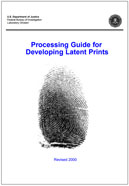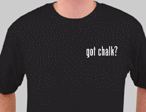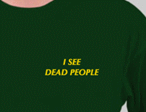|
View in browser: http://www.crime-scene-investigator.net/newsletter/1217.html
|
||
|
DECEMBER 2017 | ||
This month's newsletter is brought to you by the 2018 CSI Winter Academy
| ||
|
This Month's Featured Resource on the Crime Scene Investigator Network Website
|
||

The beginning of this manual is a list of processes and procedures for different surface types. Also included are processing sequences that specifically involve prints that are left in blood. Following these lists are details for each process that is currently implemented in the Latent Print Unit (LPU) of the Federal Bureau of Investigation (FBI) Laboratory. |
||
|
New CSI and Forensic Job Announcements
|
||
|
The most comprehensive listing of Crime Scene Investigation and Forensic To be notified of job openings as they are posted, follow us on Twitter: Job Posting Alerts |
||
|
Evidence Technician I
Wyoming Police Department, Wyoming, Michigan, USA Final Filing Date: January 7, 2018 This position is responsible for fingerprinting, photography, computer mapping/graphics, crime scene search/documentation, preservation of evidence, preparing court exhibits, records and reports and performing related work <View complete job listing> |
||
|
Crime Scene Specialist
Citrus County Sheriff's Office, Inverness, Florida, USA Final Filing Date: Open until filled Investigate and process crimes scenes through observation, photography, documentation, fingerprint development, casting, or by other means as necessary; Develop, collect, transport, and secure evidence or other property from criminal cases adhering to chain of custody and control measures; <View complete job listing> |
||
|
Criminalist
Ohio State Department of Public Safety, Franklin County, Ohio, USA Final Filing Date: December 31, 2017 Performs analytical testing on crime-related evidence provided by law enforcement officers. Performs analysis on drugs, urine, blood, physical evidence, etc. Evaluates data & develops opinions based on knowledge, skills & sound analytical processes. Provides court testimony as an expert witness; <View complete job listing> |
||
 |
||
|
Fingerprint Specialist III
Prince George's County Police Department, Landover, Maryland, USA Final Filing Date: December 31, 2017 Provides expert testimony in civil and criminal proceedings in State and Federal Court cases; provides training to subordinate fingerprint personnel in techniques and methodology of latent print examination; analyzes and compares latent finger and palm impressions from crime scenes with inked impressions or live scans of known criminals; <View complete job listing> |
||
|
Evidence Technician
Round Rock Police Department, Round Rock, Texas, USA Final Filing Date: December 31, 2017 Maintains all property and evidence seized or kept by the police department. This is accomplished by receiving and storing all evidence collected by the police department; ensuring a continuous chain of custody; responding to and fulfilling requests on evidence. The Evidence Technician is responsible for researching and using appropriate means to complete final dispositions. <View complete job listing> |
||
|
Photographic Specialist
Arizona Department of Public Safety, Phoenix, Arizona, USA Final Filing Date: January 7, 2018 Photographs accident scenes, crime scenes, aerial scenes, and public relations opportunities. Produces photos from videotapes to provide photographic proof and pictures. <View complete job listing> |
||
|
Search for more job listings in Crime Scene Investigations and Forensics To be notified of job openings as they are posted, follow us on Twitter: Job Posting Alerts |
||
|
CSI in the News
|
||
|
NMU students prepare plot site for human decomposition program Real-life CSI: New device could help bomb squads 'catch the bad guys' New state crime lab to focus on drug, DNA evidence Moore sheriff adds drone to force Fingerprint scanners identify bodies, crime suspects within seconds This machine that analyses art can also be used to solve crime How Do Investigators Match Paint Chips To Cars Involved In Crimes? Luminescent nanoparticles leave a glowing fingerprint |
||
|
Other Resources on the Crime Scene Investigator Network Website
|
||
|
Crime Scene Investigator mdash; Blog
Crime Scene Investigator Forum How to Become a Crime Scene Investigator Crime Scene Response Evidence Collection Crime Scene and Evidence Photography Crime Scene Investigation Articles Video Presentations Training and Colleges Employment Bookstore Resources and Links |
||
|
Not Subscribed to this Newsletter?
|
||
|
If you are not subscribed to this newsletter, you may subscribe with this link: SUBSCRIBE via email |
||
|
To Unsubscribe
|
||
|
To unsubscribe from future e-mail newsletters, please click here: UNSUBSCRIBE Copyright ©2017 Crime Scene Resources, Inc. Crime Scene Investigator Network |








